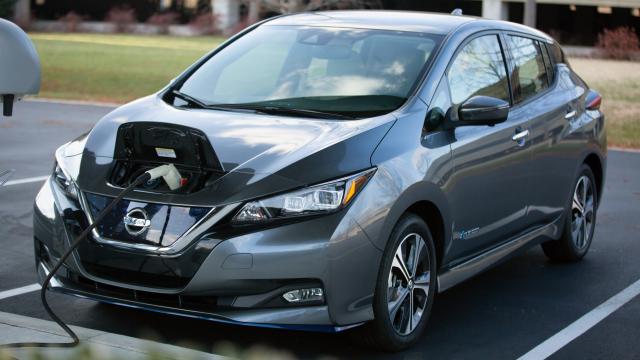The New York Times ran a first-person piece in the Opinion section about the writer getting a Nissan Leaf and her argument that owning an EV can actually be a bargain in the long run. The article is fine. Except I feel compelled to correct the record on one point.
The writer, Margaret Renkl, lives in Nashville, where it rains from time to time. She offers the following as one of the few drawbacks of owning an electric car (emphasis mine):
It’s true that it can take some planning to keep the car charged. We don’t have a garage, so we can’t charge our Leaf if it rains, and even with a battery range of more than 322 km, this car will never be our go-to vehicle for road trips.
And, look, I don’t know what Renkl’s set up is at her home, maybe she needs an extension cord and is referring to that possibly being dangerous, but the simple fact of the matter is that it is perfectly safe to charge your electric vehicle in the rain, and almost any other weather condition.
Here’s how Nissan put it when I asked today, for example:
Short answer is yes, the LEAF is safe to charge in nearly any weather condition. It is engineered to withstand rain and water intrusion.
Here is a slightly more technical explanation from Autotrader, talking about Leafs and electric cars in general:
Using the Nissan Leaf as an example, [Jonathon Ratliff, Nissan North America’s senior manager for zero emission technology development] says the IP 67 rating is equivalent “to submerging any component of our vehicle in water at 1 metre for 30 minutes…this applies to electrical components.” This means the battery and electric motors are built to withstand this level of time and depth of submersion. In other words, the rating more than exceeds anything you’d encounter when plugging your EV into a charging station in the rain.
You also shouldn’t worry about getting electrocuted:
Ratliff offers additional peace of mind when it comes to worries about inadvertently accessing electrical parts, and the interaction between a charger and vehicle. “There is no physical way for customers to touch certain components…we have many different sensor technologies that can detect isolation, or any basic change in our strict tolerances, that’s when all the high voltage components turn off.”
Go forth and charge in the rain away.
